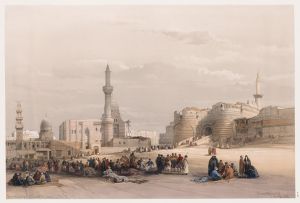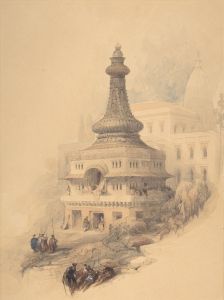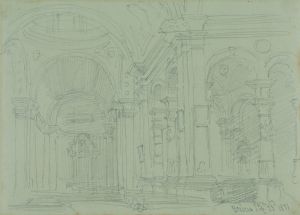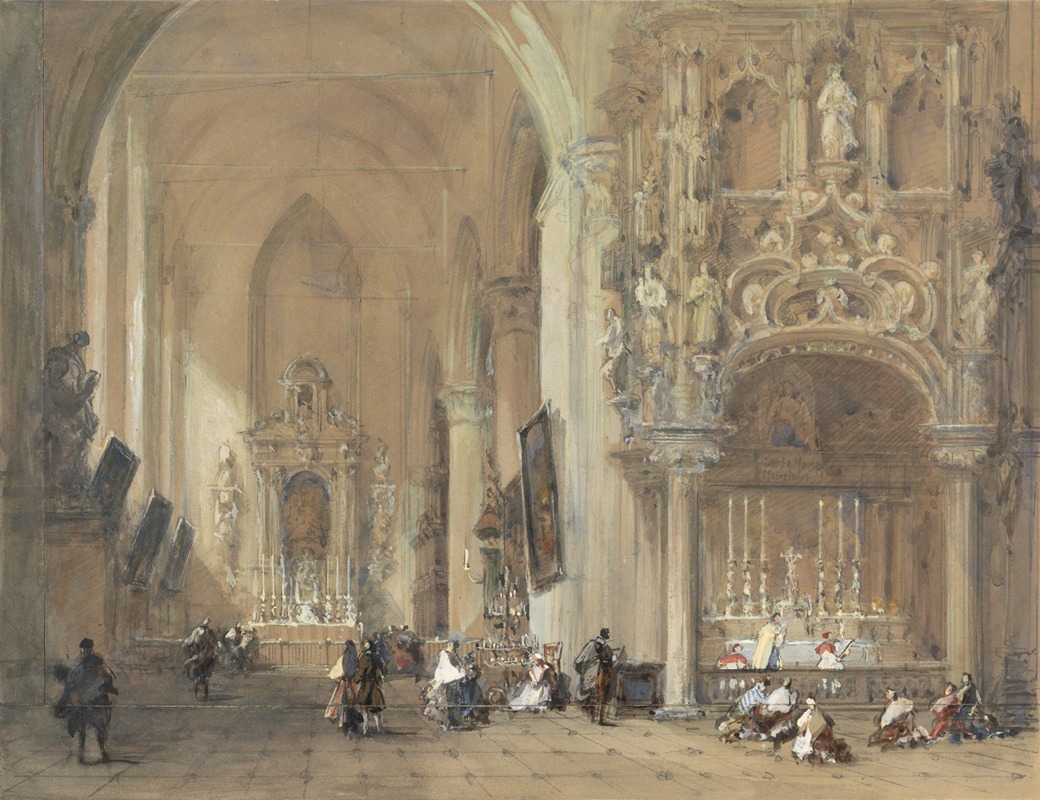
The Church at Dixmude, West Flanders
A hand-painted replica of David Roberts’s masterpiece The Church at Dixmude, West Flanders, meticulously crafted by professional artists to capture the true essence of the original. Each piece is created with museum-quality canvas and rare mineral pigments, carefully painted by experienced artists with delicate brushstrokes and rich, layered colors to perfectly recreate the texture of the original artwork. Unlike machine-printed reproductions, this hand-painted version brings the painting to life, infused with the artist’s emotions and skill in every stroke. Whether for personal collection or home decoration, it instantly elevates the artistic atmosphere of any space.
David Roberts was a renowned Scottish painter, born on October 24, 1796, and he became particularly famous for his detailed and picturesque landscapes and architectural scenes. His works often depicted exotic locations and historical sites, capturing the imagination of the 19th-century public. Roberts was a key figure in the Orientalist movement, and his travels to the Middle East and Europe significantly influenced his artistic output.
"The Church at Dixmude, West Flanders" is one of Roberts' works that reflects his interest in architectural subjects. Dixmude, known as Diksmuide in Dutch, is a town in the West Flanders province of Belgium. The town has a rich history, particularly noted for its role during World War I, but it also has a significant architectural heritage that predates the war.
Roberts' painting of the church at Dixmude would have been part of his broader interest in capturing European architecture. His works are characterized by their attention to detail and the ability to convey the grandeur and historical significance of the structures he depicted. Roberts often employed a combination of on-site sketches and detailed studio work to create his paintings, ensuring both accuracy and artistic expression.
The church in Dixmude, like many in the region, would have been a Gothic structure, reflecting the prevalent architectural style of the period. Gothic architecture is known for its pointed arches, ribbed vaults, and flying buttresses, which allow for taller and more light-filled buildings. These elements would have been of particular interest to Roberts, whose work often highlighted the intricate details and the play of light and shadow on such structures.
Roberts' paintings were not merely artistic endeavors but also served as historical records of the places he visited. His works provide insight into the architectural and cultural landscapes of the 19th century, offering viewers a glimpse into the past. "The Church at Dixmude, West Flanders" would have been no exception, capturing the essence of the town's architectural heritage.
Throughout his career, David Roberts was celebrated for his ability to bring distant and historical places to life through his art. His paintings were widely exhibited and appreciated during his lifetime, and they continue to be valued for their historical and artistic significance. Roberts' legacy is preserved in numerous collections, including those of major museums and galleries around the world.
While specific details about "The Church at Dixmude, West Flanders" may not be extensively documented, the painting fits within Roberts' broader oeuvre of architectural and landscape works. His dedication to capturing the beauty and intricacy of historical architecture remains a defining feature of his artistic legacy.





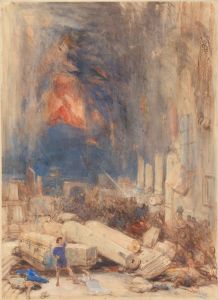
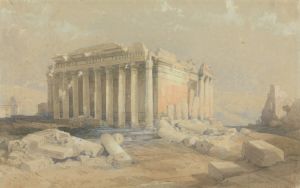
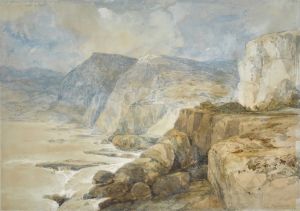
![Gate of the Metwaleys [Bab Zuwayla], Cairo.](/imgs/217486/s/david-roberts-gate-of-the-metwaleys-bab-zuwayla-cairo-669b6ca3.jpg)
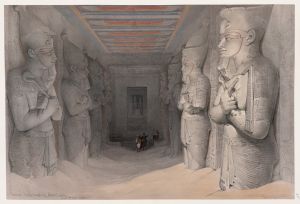
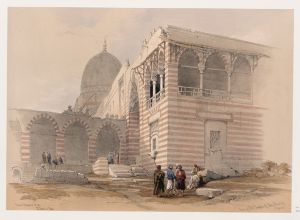
![Portico of the Temple of Edfou [Idfû], Upper Egypt. Nov. 23rd, 1838.](/imgs/217527/s/david-roberts-portico-of-the-temple-of-edfou-idfu-upper-egypt-nov-23rd-1838-79b6cf5b.jpg)
![Temple of Dandour [Dendûr], Nubia.](/imgs/217545/s/david-roberts-temple-of-dandour-dendur-nubia-8921547f.jpg)
